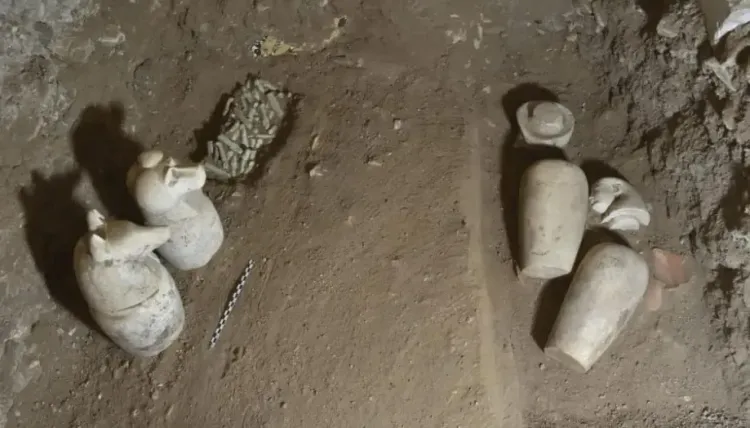Recent Archaeological Findings Illuminate Ramesseum Temple History

Synopsis
Key Takeaways
- Joint Egyptian-French mission uncovers significant archaeological findings.
- Tombs dating back to the Third Intermediate Period were discovered.
- Evidence of an ancient school was found within the Ramesseum Temple.
- Structures indicate administrative functions related to the temple.
- The temple served both religious and societal roles in Ancient Egypt.
Los Angeles, April 5 (NationPress) A collaborative archaeological effort between Egypt and France has revealed tombs and structures that offer deeper insights into the Ramesseum Temple located in southern Luxor, according to a statement from the Egyptian Ministry of Tourism and Antiquities.
The team discovered a series of tombs dating back to the Third Intermediate Period (approximately 1069-525 BCE) along with storage facilities for olive oil and honey near the temple.
Excavations within the temple unveiled the “House of Life”, which served as a scientific institution linked to major temples. This discovery included the architectural design of the educational facility and a remarkable array of artifacts, such as remnants of school drawings and toys. It marks the first evidence of a school operating within the Ramesseum Temple.
The archaeological team also identified a set of buildings likely utilized as administrative offices on the temple's eastern side, as reported by Xinhua news agency.
Mohamed Ismail Khaled, secretary-general of Egypt's Supreme Council of Antiquities, stated on Friday that these findings suggest a comprehensive hierarchical structure of civil servants associated with the temple. It was not merely a site for worship but also acted as a center for the distribution of stored or crafted goods that aided local residents, including artisans governed by royal authority within the provincial system.
Sherif Fathy, the Egyptian Minister of Tourism and Antiquities, praised the mission's work in uncovering new insights into the Ramesseum Temple and its religious and societal significance in Ancient Egypt.
The Ramesseum Temple was constructed during the reign of Ramses II (1279-1213 BCE), who had the second longest reign in Egyptian history. An earthquake in 27 BCE caused significant damage to the temple.









